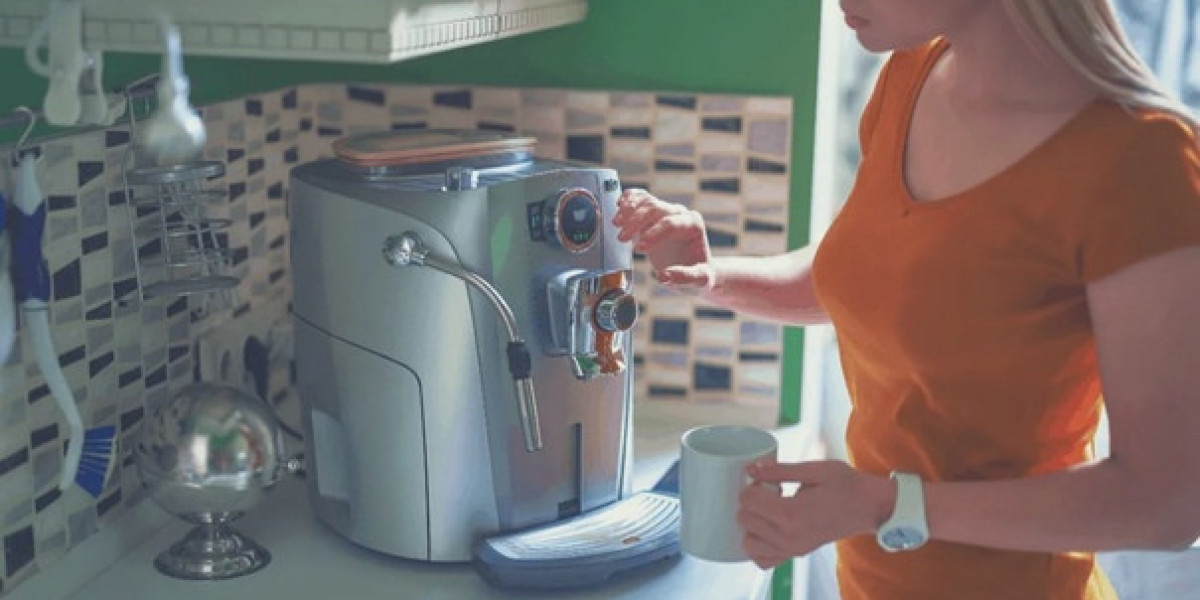The automatic coffee machines market has grown significantly as consumers seek convenience and quality coffee experiences in the comfort of their homes. However, despite the growing popularity and demand for automatic coffee machines, there are several pain points that continue to challenge both consumers and industry players. These challenges include high upfront costs, complex maintenance requirements, technical difficulties, intense market competition, and limited consumer awareness. Understanding these pain points is crucial for market participants to adapt to evolving consumer needs and drive further growth in 2025 and beyond. This article delves into these key pain points and explores how they impact the consumer experience and industry progress.
1. High Initial Cost of Automatic Coffee Machines
One of the most significant pain points for consumers when considering an automatic coffee machine is the high initial cost. While there are budget-friendly models available, high-quality machines with advanced features, such as grinders, milk frothers, and customizable brewing settings, can be expensive. Prices for these machines can range from hundreds to thousands of dollars, making them unaffordable for many consumers, especially in price-sensitive regions.
The steep price is a significant barrier for consumers in emerging markets where disposable income is lower. Many consumers in these regions prefer more affordable, traditional coffee brewing methods such as drip coffee makers or manual espresso machines. As a result, manufacturers must find ways to make automatic coffee machines more affordable and accessible to a broader consumer base. Lower-cost models, financing options, or value-added services could help overcome this pain point.
2. Technical Complexity and Learning Curve
Another pain point in the automatic coffee machines market is the technical complexity of many models. While these machines offer a wide range of customizable settings, such as grind size, brew strength, and temperature control, they can be overwhelming for many users. For consumers who are new to coffee machines or unfamiliar with the nuances of coffee brewing, the learning curve can be steep. Understanding how to use the machine to its full potential can be time-consuming and frustrating.
This complexity is particularly evident in high-end models with touchscreens or app-based controls. While these features offer greater control over the brewing process, they may intimidate consumers who prefer simpler, more intuitive machines. The pain point here is not just the learning curve, but also the lack of clear guidance for users unfamiliar with advanced coffee-making techniques.
Manufacturers could address this issue by simplifying user interfaces, offering more beginner-friendly models, and providing tutorials or customer support for users to ease their transition into using advanced coffee machines. Reducing the complexity of operation and focusing on ease of use can enhance the consumer experience.
3. Maintenance and Cleaning Burden
Maintenance and cleaning are some of the most prominent pain points that affect the overall consumer experience. Automatic coffee machines, especially high-end models, require regular cleaning and maintenance to ensure proper functioning and quality coffee production. Key components such as grinders, milk frothers, water reservoirs, and filters need to be cleaned regularly to avoid blockages, bacteria buildup, and poor-tasting coffee.
While some machines come with self-cleaning features, they still require periodic descaling and the replacement of various parts. For consumers with limited time or those who do not have the inclination to perform regular upkeep, this burden can be a deterrent. Many consumers expect convenience from automatic coffee machines, but the maintenance demands can sometimes feel like a hassle.
To alleviate this pain point, manufacturers can design machines that require less frequent or less complicated cleaning. Alternatively, they could offer subscription services for maintenance and cleaning products to make upkeep easier for consumers. Simplifying the maintenance process will make automatic coffee machines more appealing and improve customer satisfaction.
4. Intense Market Competition and Product Overload
The automatic coffee machines market is highly competitive, with several well-established brands and new entrants vying for consumer attention. Major players like Breville, De'Longhi, JURA, and Philips dominate the market, but there is also a growing number of smaller brands offering similar products. This market saturation creates confusion for consumers who are often overwhelmed by the wide variety of choices available.
For consumers, choosing the right machine can be a challenging task, especially with so many models, features, and price points to consider. This overload of options leads to decision fatigue, where consumers find it difficult to make an informed purchase choice. Additionally, companies often engage in heavy marketing campaigns to promote their products, which further adds to the confusion.
For manufacturers, this intense competition can lead to price wars, reducing profitability, and forcing them to continuously innovate and differentiate their products. Companies that fail to stand out or offer unique value propositions risk losing market share to competitors with stronger brand recognition or more innovative products.
5. Consumer Awareness and Education Deficiencies
In many regions, especially those with less established coffee cultures, there is a significant lack of consumer awareness regarding the benefits of automatic coffee machines. Consumers may not fully understand the advantages of these machines, such as the ability to brew high-quality coffee with minimal effort, consistency in taste, and the convenience of automatic brewing.
In markets where coffee is primarily consumed in cafes or prepared manually at home, many consumers are unaware of the potential advantages of investing in an automatic coffee machine. As a result, they continue to rely on traditional brewing methods or opt for simpler machines, limiting market growth.
To address this pain point, manufacturers should invest in educational campaigns that highlight the benefits of automatic coffee machines. Providing in-store demonstrations, creating informative content, and leveraging social media to showcase the ease and quality of brewing at home can help increase consumer awareness and drive adoption.
6. Environmental Concerns and Sustainability Pressures
Environmental concerns are becoming more significant in the coffee machine market, particularly when it comes to the use of single-use coffee pods. These pods, often made from plastic or aluminum, contribute to environmental waste, and consumers are becoming increasingly aware of the sustainability issues surrounding them.
As sustainability becomes a growing priority for consumers, many are opting for more eco-friendly alternatives, including reusable coffee pods, energy-efficient machines, and brands committed to sustainable production practices. Manufacturers that do not address these concerns risk losing environmentally conscious consumers.
To mitigate this pain point, brands can focus on producing more sustainable options, such as machines that are compatible with reusable pods or offer energy-saving features. Additionally, brands can introduce recycling programs or use biodegradable materials in their products to appeal to environmentally conscious consumers.
Conclusion
The automatic coffee machines market faces several pain points that affect both consumer satisfaction and industry growth. High costs, technical complexity, maintenance requirements, competition, consumer awareness gaps, and environmental concerns are the primary challenges hindering the market’s potential. However, addressing these pain points through product innovation, improved consumer education, streamlined maintenance processes, and sustainable practices can help manufacturers overcome these obstacles and capture a broader customer base.
By listening to consumer feedback and adapting to evolving demands, companies can create products that better align with consumer needs and continue driving growth in the automatic coffee machines market.
Discover more: https://www.pristinemarketinsights.com/automatic-coffee-machines-market-report









